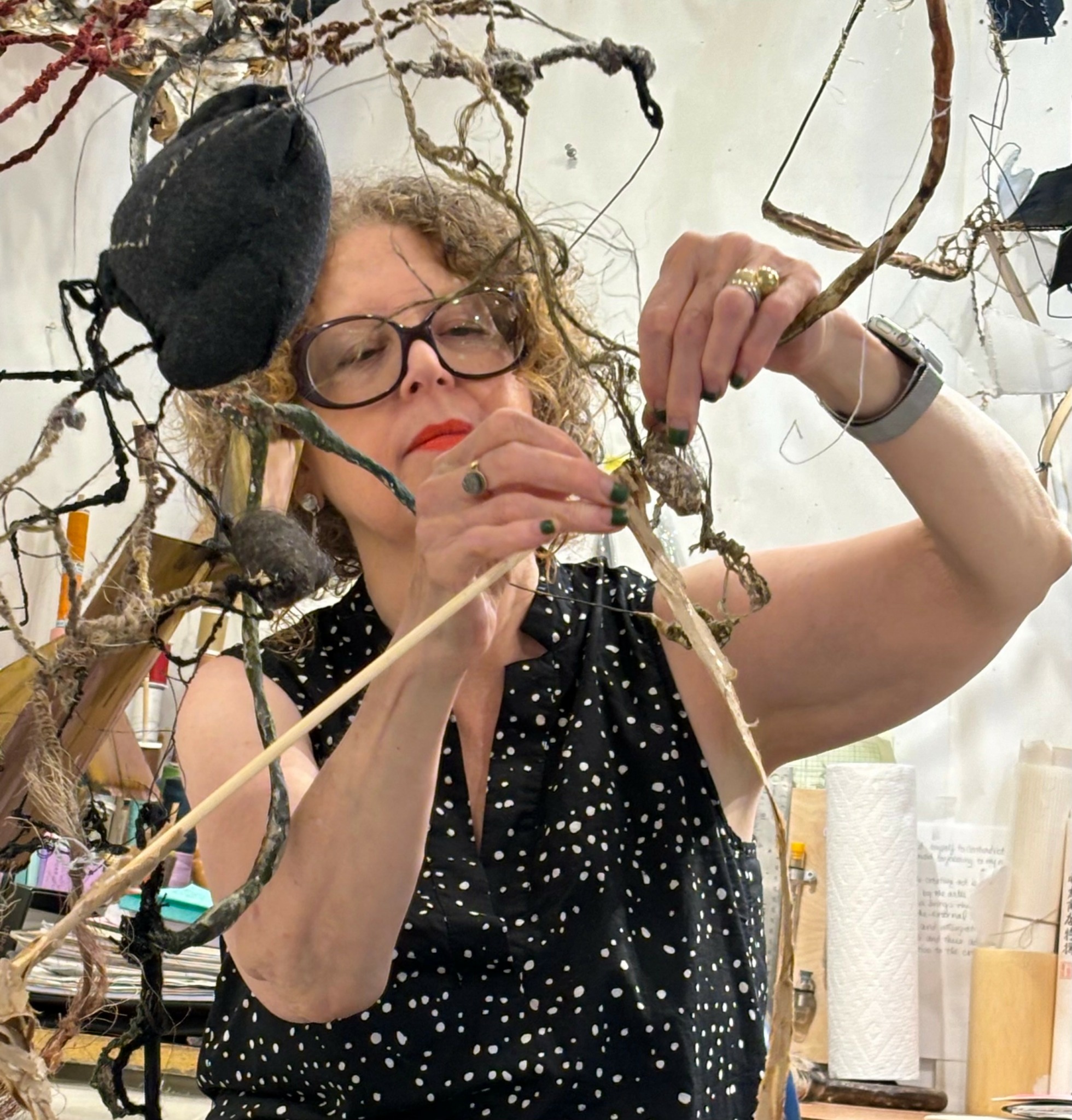We recently connected with Audrey Goldstein and have shared our conversation below.
Audrey, thanks for joining us, excited to have you contributing your stories and insights. We’d love to hear about a project that you’ve worked on that’s meant a lot to you.
I can talk about a previous installation, “Shadowtime” staged at Gallery Kayafas (now closed) in February 2021, in the midst of the pandemic closures. The work can be seen on my website, www.audreygoldstein.com.
From the artist statement:
Shadowtime, Audrey Goldstein’s current installation at Gallery Kayafas, is a house made of time, both the residue of passing time and the haunting of lost time. Made with discarded objects from an abandoned home, Shadowtime is an embodied whisper of time, an attempt to contain our stories of loss and beauty within the ghostly walls of a home. The rooms of Shadowtime are divided into timescapes that reflect periods of daylight and night. The pigmentation of each hour’s panel is a record of observed light from when it was made.
Enter the house between the eleven pm to midnight doorway and you find the Walking Stick sculpture, used as a sundial to generate the wall shadows. These wall panels both represent time (their observed light) and are made of time (their evaporation patterns). A walk through the rooms takes you through an entire day. Approach the panel of a single hour and you see the imprint of flotsam and jetsam scattered by a lifetime spent. The shadow-sediment is what remains from the Walking Stick’s cast shadow.
The Walking Stick was formed by gathering and stitching but is held together by thread alone and is a conglomerate of leftovers. It is a record of time that is both noticed and unnoticed, spent and forgotten. The objects used are not seen individually but as building blocks. Their silk cocoons contain, isolate and preserve their memory-forms. The objects are held in stasis but serve to construct the whole. Each item’s original value is replaced by its structural purpose. The Walking Stick’s shadow contains a remnant of the home’s owner.
Shadowtime is a building made to highlight our felt experience, our physical selves beyond the screen. It is a building made to wander through, to move through its rooms of time and begin to reset our pandemic isolation as you would reset a clock. Wanderers are invited to carry a small handheld; 5 objects of contact piece that can help ground them through touch. These small handhelds are made as haikus- a small gathering that expands understanding. Through touch, through contact forbidden us now, these small moments can help bring us connection.
(Additional Statement: The Walking Stick sculpture also serves as a time capsule. Encased objects are from four generations of the artist’s family.)
The experience of bringing in small groups at a time, general public, artist friends, young and old, changed the way I understood my work and helped deepen the understanding of what we all went through during the isolation of the pandemic. People cried while in the installation. the experience of connection, the need for beauty, the physical need for touch, were highlighted. I began to understand how my sculpture is about giving others a way to settle in themselves, to occupy their spaces, to breathe.
I also made small works, the “Handhelds” that gave people a way to connect with materials, to learn through touch, as they transversed the installation.
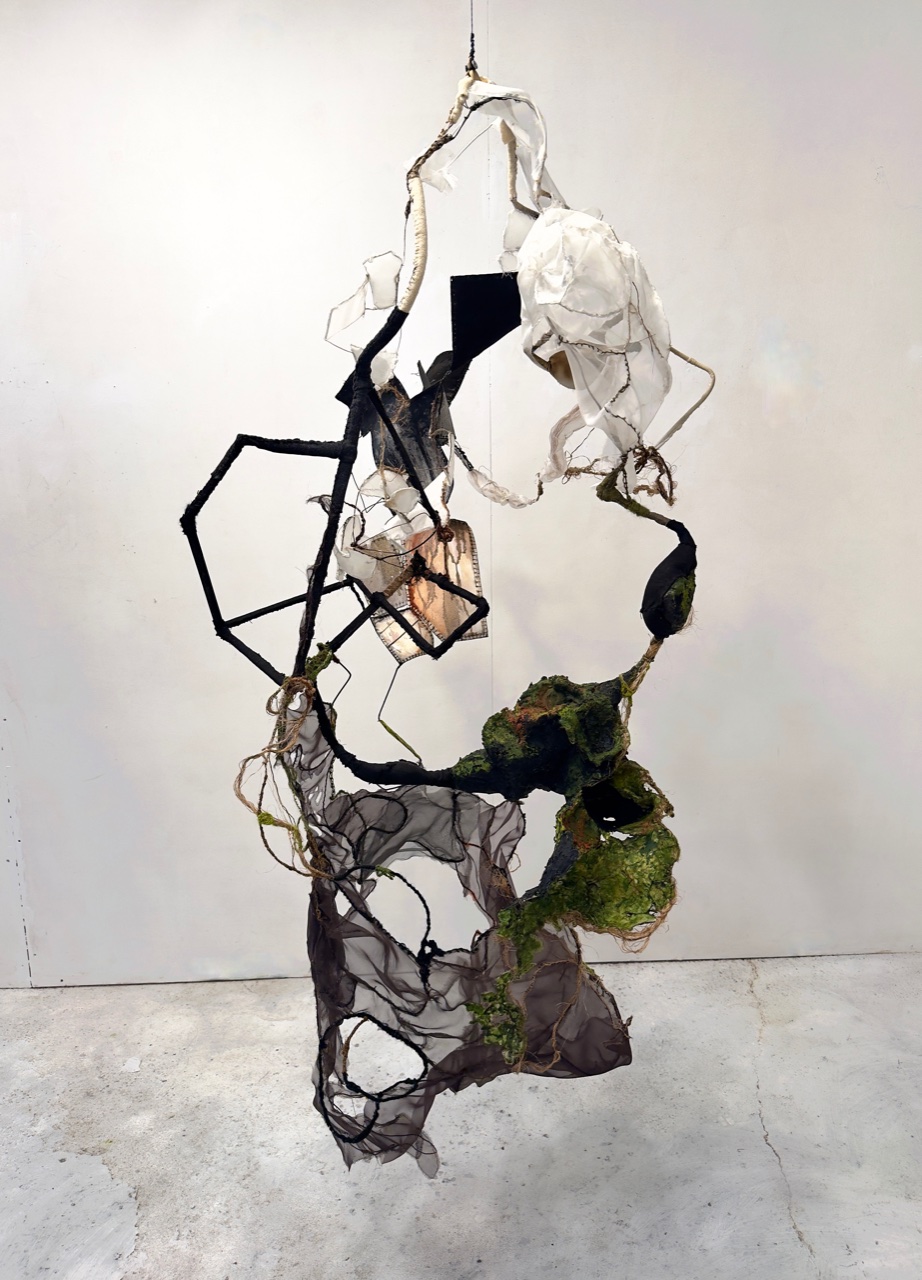
Great, appreciate you sharing that with us. Before we ask you to share more of your insights, can you take a moment to introduce yourself and how you got to where you are today to our readers.
I’m a sculptor with a background in painting. I grew up as a painter but grew tired of what I made. I moved away from illusionistic space to work with actual materials. Going back to grad school as a new sculptor gave me the environment and new set of questions I needed to explore.
My practice has included installation works, performative sculptures, and community-engaged works.
My current series, “Ephemeral Bodies”, is suspended, off the ground, hanging and slowly turning. I moved off the wall-based, mapping-type works of the past few years at the suggestion of a curator-friend. The liberation I felt just by moving into empty space was joyous. The wall, the floor, is too heavy for me right now. The work needs to float in relation to our earth -boundedness.
I think about drawing all the time. I build drawings in space. The line, its weight, its thickness, the areas of density, the hollows surrounded by shape, all these are sculptural drawing notions.
I also think about frailties, fragilities, and vulnerabilities. I’m interested in how strength is developed out of vulnerabilities. How a pearl is formed out of irritations and wrongness. How the practice of empathy, of seeing each other as oneself, transforms our core, creates open spaces within, where we once thought of ourselves as solid. So I use areas of muscularity in relation to delicacies, translucencies in relation to densities, and shape forms to create a type of ouroboros, an loop of infinity and renewal. I use a large variety of materials, as they each carry a certain type of meaning and shift the conversation in different directions. A sampling: wool thread, hemp twine and rope, aluminum and steel wires, cloth covered millinery wire, cement, ash, various adhesives, paper mache, fabric, aluminum mesh, thread, wood, glass shards, paper, hi-flow acrylics and industrial felt, to name a few.
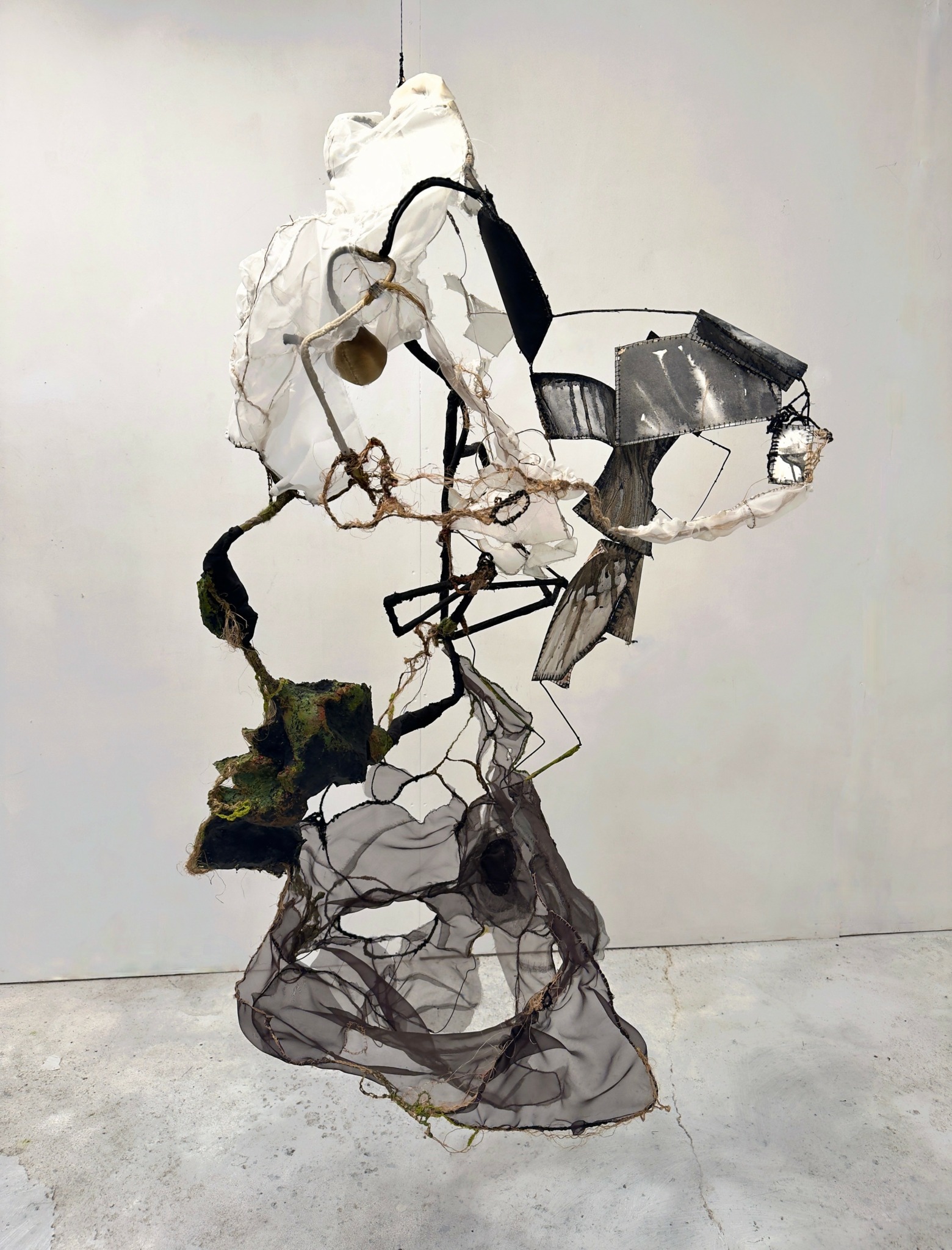
Any resources you can share with us that might be helpful to other creatives?
I wish I understood how imperative building an artist community is to survival. Isolation is numbing. For young artists, go out to openings, talk to people you don’t know about their work. Relying on remote relationships alone is limiting.
Developing deeper relationships, over time, with other artists I admire, has allowed me to continue with my practice. Especially when the work gets difficult, sharing ideas and receiving feedback from other studio practitioners is healthy.
Sharing excitement over work, looking at others’ works in shows and in their studios, both enriches and gives me permission to expand.
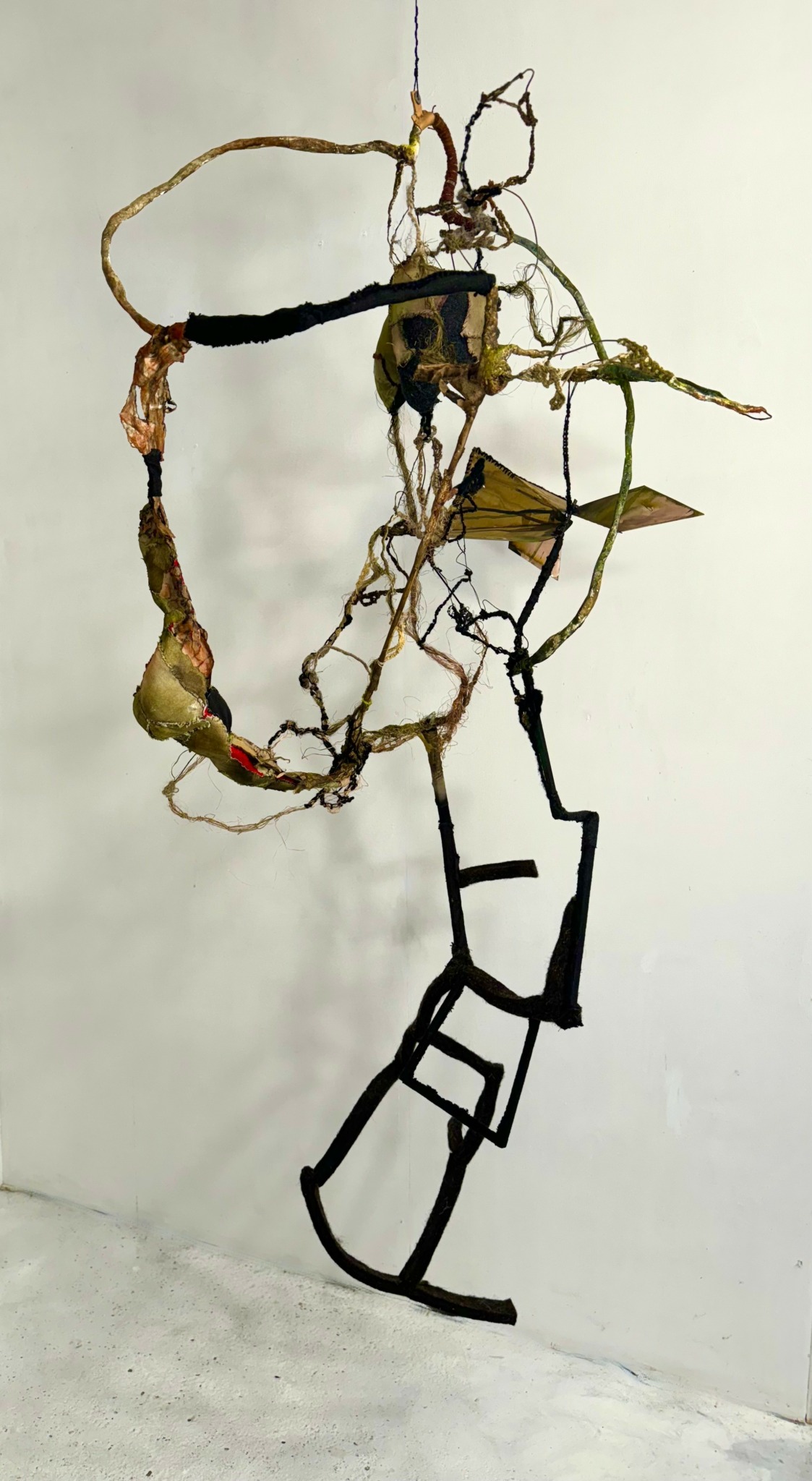
What’s the most rewarding aspect of being a creative in your experience?
Sanity. My practice is where I learn about myself. I’m often shocked and uncomfortable with where the work goes. Following the truth of the work, what it needs, is a way to see how I am personally not defined by my statistical profile, my medical profile, my financial profile.
My work allows me to step outside of who I think I am. With the work I am making now, I can see a strength in frailty, a determination in delicacy. So I relate these qualities to how I think of myself. As my bodies of work change, I change, adapt, rethink my self-image.
Contact Info:
- Website: https://audreygoldstein.com
- Instagram: Audrey.e.goldstein
- Youtube: N/a
- Yelp: N/a
- Soundcloud: N/a
- Other: N/a
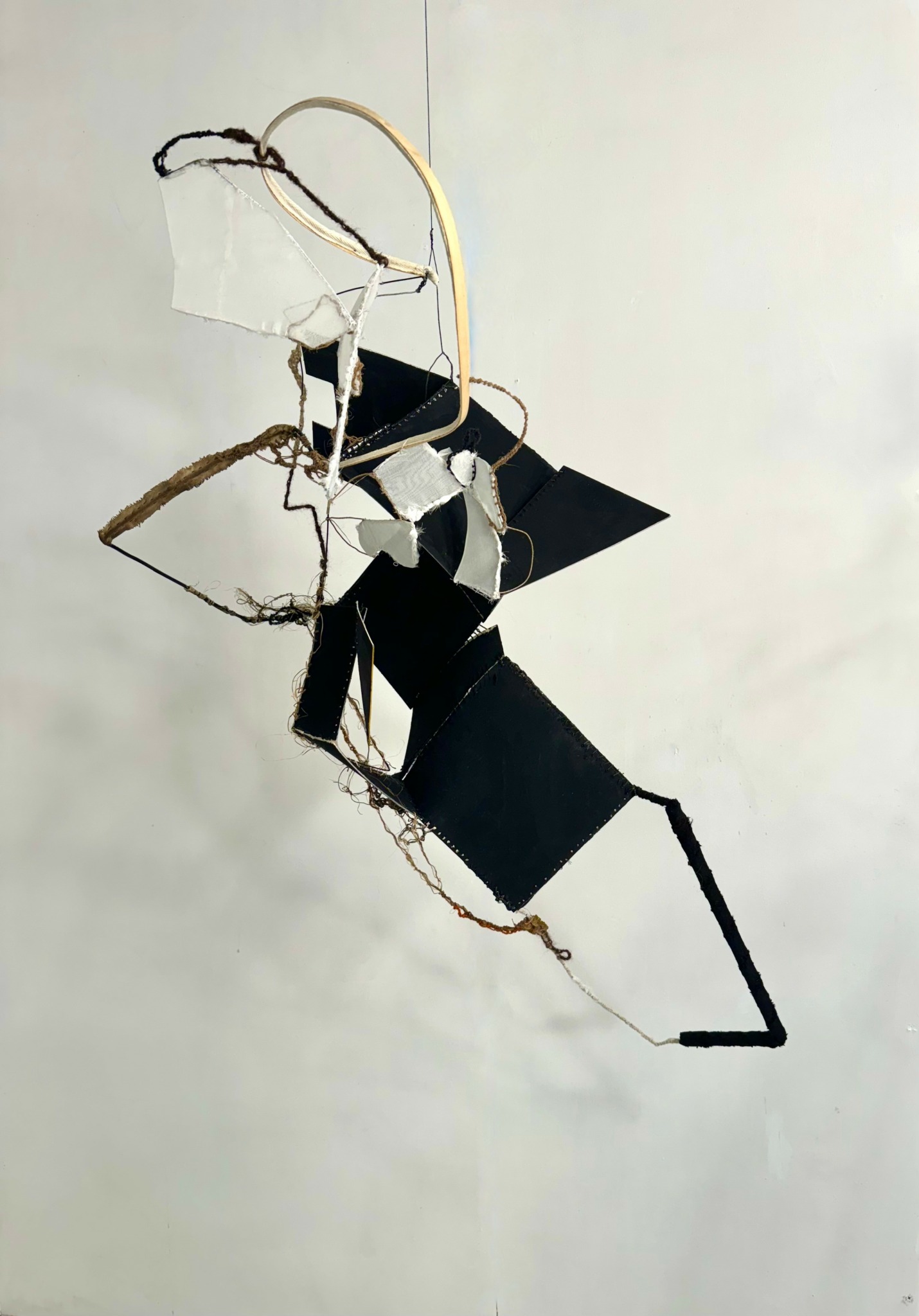
Image Credits
all photography by artist
Image Checklist:
1. Ephemeral Bodies, #4, View 1. 2024. Mixed media. 64″ x 36″ x 32″
2. Ephemeral Bodies, #4 View 2 ” ” ” ” ” ”
3. Ephemeral Bodies #3 2024. Mixed Media, 59″ x 26″ x 18″
4. Ephemeral Bodies #2 2024. Mixed Media. 39″ x 24″ x 22″


